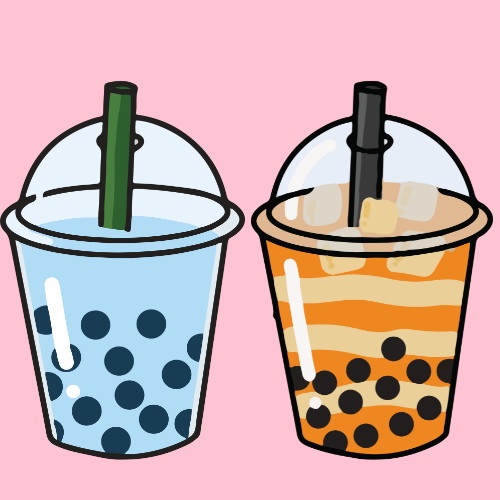If you come across the list of ingredients in the food you provide to your dog, you can find that Tapioca is among them. Because it is starch, Tapioca may be fed to most dogs without any concerns. It gives dog food texture and taste and serves as a filler. Tapioca that has been cooked and left plain can also be given to your pup in tiny amounts.
So, can canines eat Tapioca? Tapioca is a healthy food option for dogs to consume. It is a popular component in various canine diets since it is derived from the cassava plant’s roots. As a carbohydrate, Tapioca should be consumed in moderation to avoid the risk of diabetes and obesity. Tapioca can cause an allergic reaction in certain dogs.

If you’re considering feeding your pup tapioca and want to know if it’s safe, continue reading for more information.
What Is Tapioca?
Tapioca is a starch extracted from the cassava plant’s root. It does not include any fiber and is almost entirely composed of starch.
Some might argue that consuming a diet consisting solely of starch is hazardous in the long run, as it contains no nutritional value and provides few health advantages. However, the fact that it is gluten-free is the aspect that elevates it above other choices.
Check here to see how its made.
Can a Dog Consume Tapioca?
Tapioca is completely safe for canines. It is non-toxic in any form and serves as a starch foundation in many items sold as food for dogs.
Certain pups and other pets have adverse responses to grain-based carbohydrates when they are included in their diet. In some situations, dog owners observed that their pets’ hair began to come out after consuming grain-based carbohydrates.
On the other hand, Tapioca replaced cornstarch as the primary source of starch once they made the move. Tapioca that has been processed and refined can often be purchased in the form of flour, flakes, or pearls. The flour thickens dog food like soups, and the flakes and pearls may be used to make pudding.
Advantages of Tapioca for Dogs
Tapioca is highly filling and comparable to fiber in its effects. It can assist in making dogs’ bowel movements more regular.
- It can satisfy dogs that already have digestive disorders, such as delayed digestion or constipation, as well as dogs that already overeat.
- Some canines are gluten-sensitive; however, it’s not as common as in people.
- A dog that is intolerant to gluten cannot consume a diverse range of grains, even if they are nutritious and useful. Tapioca, a gluten-free grain, can help dogs with gluten sensitivity.
- The consumption of tapioca ranks as the third-most common way to obtain carbohydrates. Carbohydrates are the major source of energy since they provide the body a boost, fuel it, and enable it to perform many of its duties.
- Carbohydrates are vital for working canines and canine athletes. Tapioca, on the other hand, is a nutritious option for dogs of any breed that require a great deal of energy to power their day-to-day activities.
Potential Issues With Tapioca for Dogs
White Tapioca is healthy for dogs; however, allergies, intolerances, or overeating might cause difficulties. Here are some dangers to consider.

Obesity
Because of the high starch content of Tapioca, allowing your pup to consume an unhealthy amount of this food might result in obesity and other health problems associated with weight gain.
Diabetes
Tapioca, composed almost entirely of starch, has been linked to elevated blood sugar levels and an increased risk of developing diabetes.
High Glycemic Index
Tapioca is only a source of starch and nothing more. As a result, the glycemic index of Tapioca is relatively high. The glycemic index evaluates the rate at which the sugars in various quick-service meals are absorbed into circulation.
High glycemic index meals release glucose quickly, whereas low glycemic index foods release glucose slowly.
Cyanide Poisoning
Cassava is used to make Tapioca, and the plant’s roots are rich in cyanogenic glycosides, which are cyanide. Canines can die from cyanide poisoning if they consume an excessive amount of Tapioca that has not been properly cooked.
Allergic Reaction
There is a chance that some dogs are allergic to Tapioca and that they will experience an allergic response if they consume it. They might have issues with their digestive system, as well as rashes and irritation of the skin.
- Is Ginger Ale Good for Dogs?
- Why does Focal Motor Seizure Dog Teeth Chattering Occur?
- Can Dogs Go On Trampolines [Advice]
How Much Tapioca Can Dogs Consume Safely?
Tapioca shouldn’t be consumed in large quantities by canines. The recommended portion size is risk-free if it is included within their dog food.
If you want to give your pup plain tapioca, you should give dogs that weigh less than 30 pounds no more than one teaspoon and dogs that weigh more than 30 pounds no more than two teaspoons.
Can Dogs Have Tapioca Starch?
Tapioca starch is safe for canines to consume. This is because tapioca flour and tapioca starch are the same substance.
When shopping for tapioca starch, you should pay close attention to both the list of components and the description of how the product was made. This is because many manufacturers label their products tapioca starch or flour, whereas, in reality, they offer cassava starch or flour.
Can Dogs Consume Cooked Tapioca?
Yes, dogs can consume cooked Tapioca. Cooked Tapioca is Tapioca that has been made by cooking on the stove, as its name indicates. Since tapioca and stove cooking are safe for dogs, cooked Tapioca is too.
Cooked Tapioca for canines can be blended with protein-rich meat and vitamin-mineral-rich vegetables to produce a balanced diet.
Tapioca that has been cooked should not be given to your dog daily because of its significant amount of carbohydrates. Instead, you may treat this dish as a special treat and only make it for guests when they visit.
Can Dogs Have Tapioca Pudding?
No, tapioca pudding is not safe for canines to eat. While Tapioca is acceptable for dogs, the other ingredients are not.
Tapioca, milk (either normal or coconut, or other lactose-free milk substitutes), sugar, eggs, and vanilla extract are the ingredients that make tapioca pudding. Milk, sugar, and vanilla extract are the three elements that might potentially cause problems.
Many pups are lactose intolerant. The primary kind of sugar that may be found in cow’s milk is called lactose. Lactose-intolerant dogs experience diarrhea, flatulence, and stomach discomfort when exposed to lactose.
Regarding sugars, it is common knowledge that canines should not consume sweets since they are unhealthy for canine systems. Simply said, a dog’s digestive system is not designed to absorb sweets, and excessive sugar consumption can cause obesity and raise the risk of diabetes.
If the pudding recipe calls for artificial sweeteners rather than sugar, this will also cause worry. Xylitol is by far the most used kind of artificial sweetener. Unfortunately, xylitol is exceedingly harmful to pups, and any dog that ingests xylitol needs immediate medical assistance from a veterinarian.
Instructions on How to Cook Tapioca for Dogs
If you give your dog tapioca, the best way to give it to them is either unseasoned or mixed in with their regular meal.
You may make it by bringing one cup of water to a boil on the stove, adding one cup of tapioca pearls, and then boiling the mixture.
Once the pearls have become larger, softer, and somewhat transparent, you may remove the stove. Before giving it to your dog, ensure it has cooled down first.
When Should You Avoid Feeding Tapioca to Your Dog?
Tapioca is generally well tolerated by canines and can even be beneficial when given in tiny doses. If your pup has an allergy to Tapioca or has previously consumed it and experienced stomach or digestive issues, you should avoid feeding it to him again.

Doctor of Veterinary Medicine (D.V.M.) at Nation Taiwan University,Master of Science (M.S.) in Biomedical Engineering at National Taiwan University of Science and Technology




